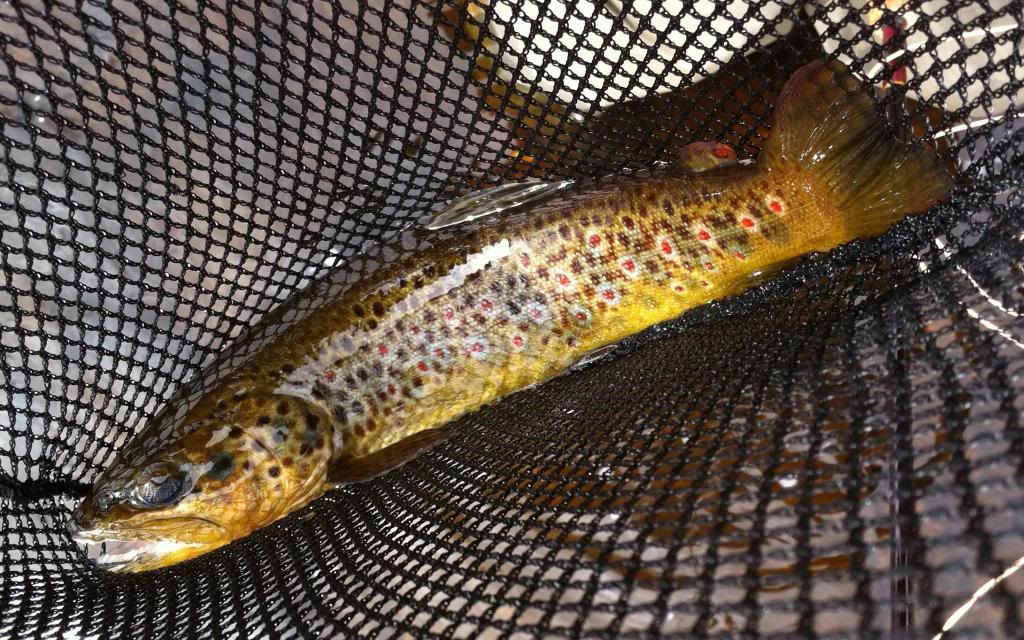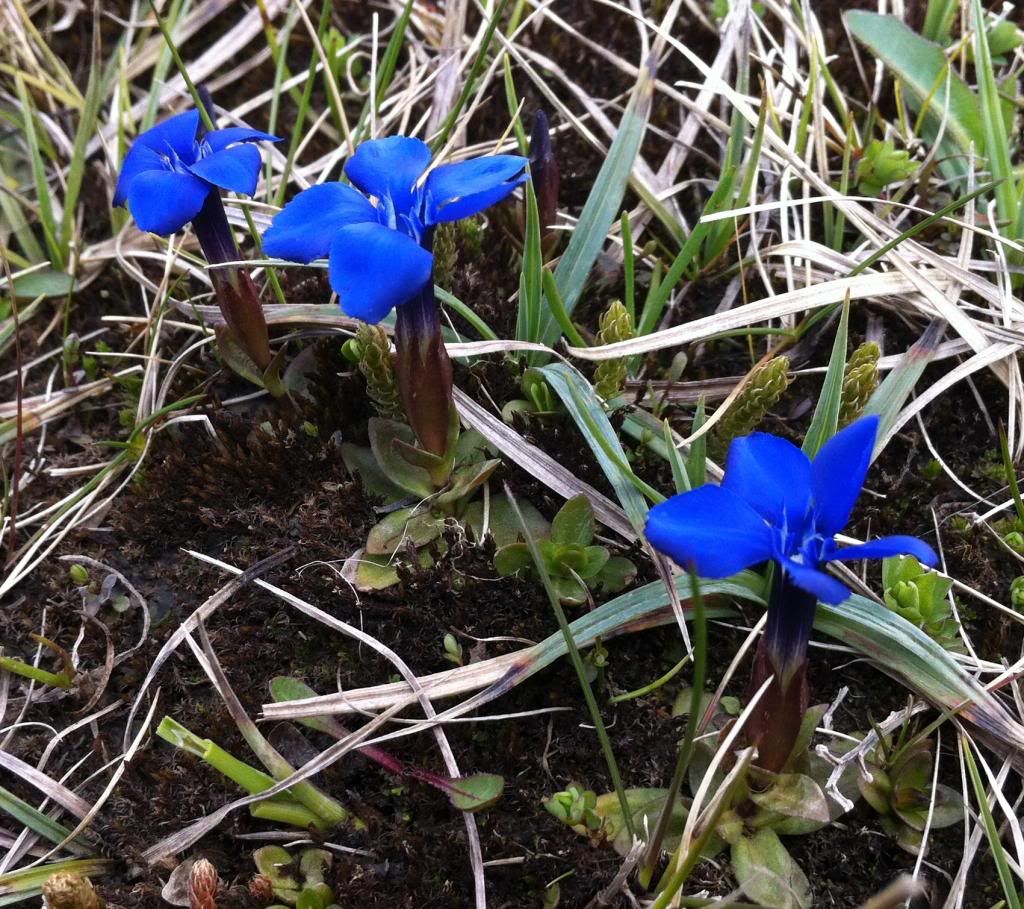You really did not want to be on Cronkley Scar without a hat this week. What with the delayed start to spring - and its being the best part of 1500ft above sea level - warm headgear, thermal underwear and a water proof outer layer represents a minimum starting point.
The forecast had contained warnings of gale force winds and they may, for once, have been right. I was glad I had tied some leaders in the warmth of the cottage as there was no way I could have done so in situ. Merely tying on the flies that made up my team of three taxed the very limits of my competence, not to mention my patience. Once the sanctuary of Widdybank farm and the car is left behind there is no shelter when it's blowing like this - none. It can be bleak, but the rewards are great.
I began, as mentioned, fishing a team of wets, incorporating a local black spider pattern on the point, a snipe and purple on the middle dropper and a winged march brown, across and down. The march brown proved the fly, with three small, but typically pretty brownies falling to it in the first few casts. The reason for it's predominance was made clear shortly after the last of the aforementioned fish was returned. A hatch of march browns began - spectacular and astonishing in its size and in the rapidity of its commencement. Immediately, and with abandon, fish began to rise to the duns. Trout were splashing all around me in a manner I have not seen before. It certainly made me reassess previously held preconceptions regarding how many fish are present in a given pool on this beautiful beat. Fish were rising all across the river, constantly, until the hatch stopped as abruptly as it had begun. It had looked like rain.
An Upper Tees trout of typical size - small, but perfectly formed
I caught a few more before deciding to switch to the dry fly. I have developed a method for fishing the dry downstream which can be effective when the high winds that invariably prevail in this place are gusting in that direction. Basically, it's a dump cast where a full back cast is made across the flow, but the final power stroke of the forward cast is deliberately and abruptly shortened, without any follow-through - the rod being held high throughout. The result is that the line goes out across the river at 90 degrees to the flow - and the wind - but runs out of steam. The result is that the leader ends up pointing directly downstream and the line collapses upstream of it with enough slack that an effective drift can be effected. Adjustments are made to alter the range etc. Using this cast it is possible to fish 'across and down' with a dry fly in extremely windy conditions whilst offering pretty decent presentation.
Using this method I picked up eight more fish throughout the day. It's infinitely more gratifying to catch them on the dry than fishing across and down with a team of wets, although, inevitably, you'll catch less. I think, however, that the better fish fall to the dry fly. The trout pictured below might have touched half a pound - a monster for these parts...
A monster Teesdale trout (compare with the example above and marvel at the sheer size...)
There are many other reasons to come fishing up here; the sheer bleakness and hostility of this invigorating landscape, an environment that has lead to the survival of some of Britain's rarest plants that, uniquely, grow here together - the so-called Teesdale Assemblage. Most lovely among these is the Blue, or Spring Gentian (Gentiana verna). The spring gentian grows only here, and in north western Ireland in the British Isles. Its bloom is possibly the bluest thing in nature, which is saying something. Additionally there is the bird-life: ring ouzel, wheatear, peregrine, merlin, grouse - red and black, and so on. Ecology-wise, it really is a remarkable place.
The spring gentian - I nearly stepped on these, a faux pas indeed...
It is possible to catch remarkable amounts of fish here, if numbers are your thing. It's also possible to spend the entire day fishing without seeing another human being, it that's your thing (it is mine). If you can stand the weather it's more than worth a trip to Upper Teesdale for some wilderness fishing.
The aftermath of another squall
Permits are available from Raby Estates (01833 640209), offering 9 miles of fishing from Middleton to Cauldron Snout on the north bank of the Tees. When I'm up here I rent Firethorn Cottage in Middleton-in-Teesdale - firethorncottage@hotmail.co.uk - and can heartily recommend it.





1 comment:
Sounds glorius!
Post a Comment